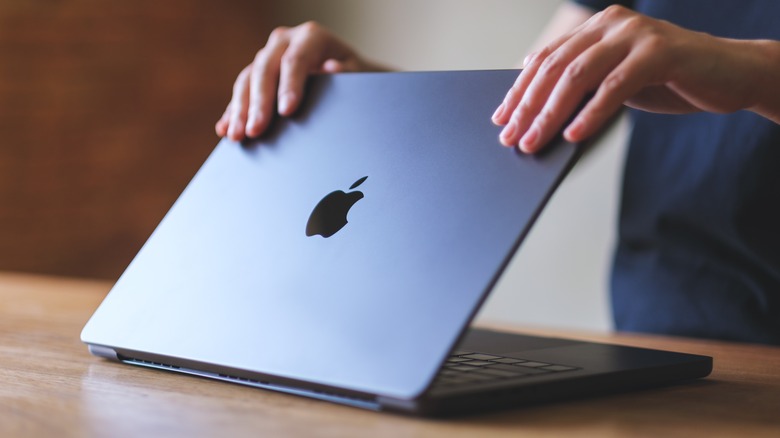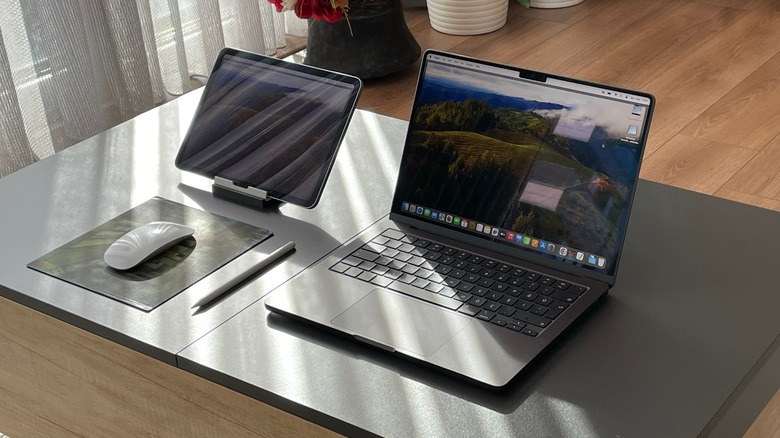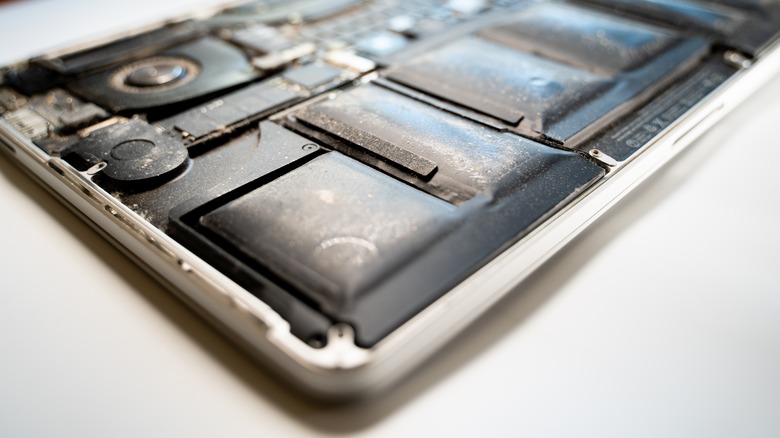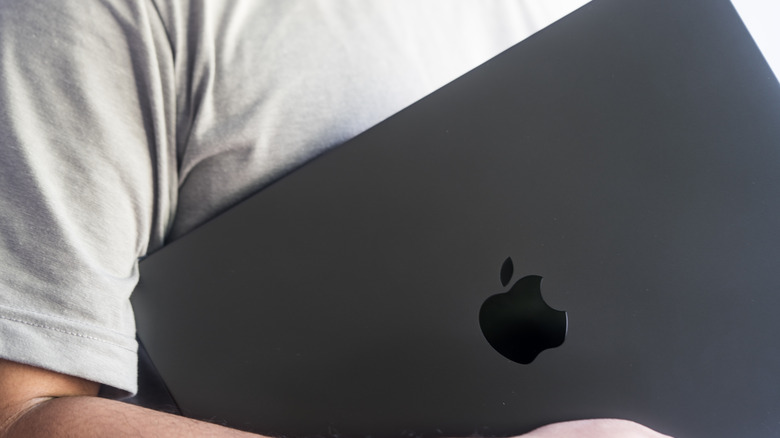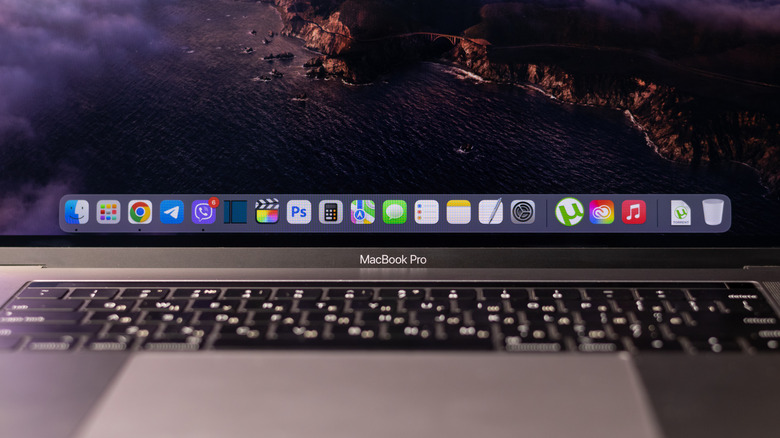How Long Do MacBook Pros Typically Last (And How Can You Extend Their Lifespan)?
In 2006, Apple launched the first ever MacBook Pro, which styled itself as the "first Mac notebook based on an Intel processor." At the time, the company announced a slew of never-before-seen features, a MagSafe charging mechanism, and a neat 5.6 lb aluminum-enclosed body. Since then, the MacBook Pro had gone through facelifts, feature upgrades, and unprecedented power ups (especially with the rise of Apple Silicon). However, almost two decades later, one thing hasn't changed: millions of users are still betting that it will be the perfect companion for their personal or professional needs. Among the many reasons why it may be worth it to switch from Windows to Mac? MacBook Pros are believed to last longer.
These days, with the rate that technology tends to progress, a few years can feel like a lifetime in terms of what new devices can do. If you went back in time and showed early Apple supporters what the MacBook Pro can now accomplish, they might think of it as magic. Plus, with so many ways to customize your MacBook, it's no wonder why it remains a staple in the Apple ecosystem, especially given how well it works with everything else. That said, laptops are often viewed as investments that are supposed to last throughout multiple school years or promotion cycles at work. But, how long does Apple think each MacBook Pro is supposed to work and do they really live up to these expectations?
How long Apple thinks your MacBook Pro is going to live
Because they're often packed with the most cutting-edge features upon release, a lot of users purchase MacBook Pro models under the assumption that they're going to be effective for a while. Although Apple doesn't officially share how long it expects each MacBook Pro model to be in use, there are some clues in its policies, specifically when products are no longer supported by official repair.
Depending on your device, location, and access to repair parts, Apple shares that you should expect access to official repair support for at least five years after your Mac laptop was last distributed on its official platforms. Because of this, any MacBook Pro model no longer sold in official stores for that period is considered vintage. As of August 2024, there are nine MacBook Pro models currently listed as vintage with the latest being the MacBook Pro (13-inch, 2019, 4 TBT3).
On the other hand, once your discontinued MacBook Pro model hits the obsolete category (or seven years after it was discontinued), you're basically on your own if anything goes wrong or you risk help from unauthorized repair centers. Unfortunately, the most Mac laptop owners can expect is repair assistance for battery issues for up to 10 years, but all other hardware and repairs will not longer be supported. As of August 2024, the latest MacBook Pro to join the obsolete roster is the MacBook Pro (Retina, 15-inch, mid-2014).
How long do MacBook Pros actually last?
In general, experts are divided on how long MacBook Pro laptops can be expected to last, especially because there are so many factors at play. For example, your lifestyle, how you use it, and the repairability of your particular laptop model can impact how long you can keep it running and its expected lifespan. That said, Asurion and its experts claim that MacBooks can last for an average of 5.5 years, so that's more than enough to survive the length of time it takes to get a bachelor's degree from a university.
But, if you are ready to upgrade, even if your MacBook Pro is still running pretty well, you'll be happy to know that they retain good resale value too. And if you don't really want to sell it, we can give you plenty of ideas to repurpose your old MacBook, like using it as a security system hub or media server. When it comes to tech longevity, it's always a bit of a balance between how it's designed and how you use it.
Thankfully, you're not shackled to the expectations of how long Apple thinks it should be maintained or how long other people's MacBook Pros are known last. With the right combination of care, there are plenty of ways you can make yours last longer. To extend your MacBook Pro's lifespan, you'll need to take two things into consideration: hardware and software. Here's how to manage both.
How to keep your MacBook Pro's hardware healthy
When it comes to protecting your MacBook's hardware, you'll need to watch out for critical issues, like moisture, temperature, and physical damage. Unfortunately, no MacBook Pro model is waterproof, so if you typically find yourself traveling to and from locations with your MacBook near water or wet, rainy weather, it's best to invest in a waterproof or water-resistant sleeve or bag. If you're not sure where to start looking, you can check out our list of best laptop backpacks for device protection.
In addition, a good case can be your first layer of protection from unexpected bumps, falls, and other forms of physical damage. When choosing between cases or sleeves, it really boils down to preference and how at-risk your device is with your lifestyle. For example, you may want something a little more durable if you use it for field projects. Regardless, if you are using a case, make sure to pick one that isn't going to cause your device to overheat.
To avoid roasting your MacBook Pro's internal components, it's best to make sure that your MacBook Pro isn't exposed to extreme temperatures and is properly ventilated, especially if you're using complex programs. Like other electronic devices, they have standard operating temperatures that are meant to keep you and your device safe. And of course, while privacy matters, Apple cautions users against using webcam covers when closing the laptop, because the wrong ones can cause harm to your MacBook's screen.
Tips for managing your MacBook Pro's software
Once you've covered all your bases with your hardware care, here are some suggestions to make sure your MacBook stays healthy on the inside too. While it's common knowledge that lithium-ion batteries, like those in MacBook Pros, will give in at some point, there are ways to properly maintain your MacBook Pro's battery to keep it healthy for as long as possible. Aside from changing a few settings for better MacBook battery life, you can also commit to not using unauthorized chargers, not overcharging it, and storing it properly when not in use for extended periods.
Next, you'll want to avoid bad usage habits that can affect the important components of your MacBook Pro, such as not updating the software regularly. Not only do software updates keep urgent security risks at bay, but they also help with optimizing your laptop to run more effectively. With time, this will reduce the overall usage strain and keep your device healthy. To check if your MacBook is in desperate need for a software update, here's how.
- On your Mac, click the Apple icon > System Settings.
- In the left sidebar, click General > Software Update.
- If there is an available update, click Update Now.
In some cases, you may not be able to update your MacBook Pro operating system if you have a full storage. To fix this, you can clear your MacBook Pro cache or back up your MacBook to iCloud.
